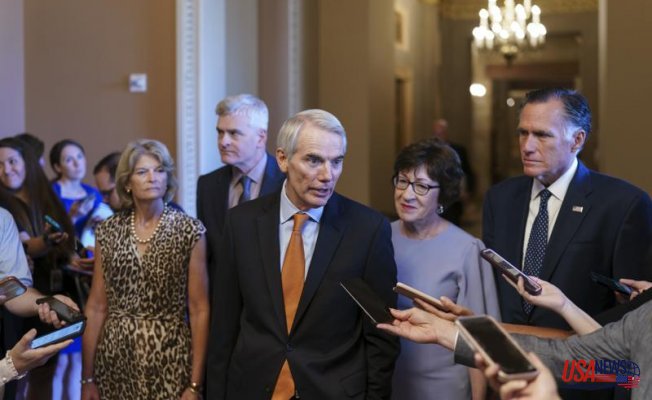According to the White House, the investments will create an average of 2 million new jobs each year in the next decade. The Associated Press obtained a 57-page Republican summary that outlines how lawmakers plan to finance the extra spending.
Here's a breakdown of where the dollars would go, according to a summary released by the White House on Wednesday.
-- $110 billion for roads, bridges and other infrastructure. The single largest bridge investment made since the construction the Interstate highway network is $40 billion.
$39 billion for public transportation. This money would be used for modernizing the subway and bus fleets, and to provide new service to communities. This is about $10 billion less than the original estimate of senators who negotiated the agreement.
$66 billion to freight and passenger rail. This money would be used by Amtrak to reduce its maintenance backlog, to improve Amtrak’s 457-mile-long Northeast Corridor, as well as other routes, and to make safety improvements to rail grade crossings.
$7.5 billion to fund electric vehicle charging stations. The administration believes this is crucial to accelerate the use of electric cars to reduce climate change.
$5 billion to purchase electric school buses and hybrids. This will reduce reliance on school buses running on diesel fuel.
Ports: $17 billion, $25 billion Airports: To reduce congestion and fix maintenance backlogs.
$55 billion to finance water and wastewater infrastructure. This includes funding for all the nation's service lines with lead pipe.
• $65 billion to increase broadband access. This is a problem in rural areas and tribal communities. The majority of the money would come from grants to states.
$21 billion to clean up brownfield and superfund sites, reclaim abandoned minelands and cap old gas wells.
$73 billion to modernize the country's electric grid, and expand the use of renewable energy.
Here's a breakdown on pay-fors in an overview of the Republican plan:
-- Approximately $205 billion in COVID-19 unpaid relief aid. In response to the pandemic, Congress has provided emergency assistance of $4.7 trillion.
The federal government provided $53 billion of unemployment insurance assistance to help supplement state unemployment insurance. Numerous states have declined to accept the federal supplement.
By further delaying a Medicare rule that would have allowed beneficiaries rebates, the government is now able to draw on $49 billion. Although the trade association representing drug manufacturers claimed that the rule would reduce out-of-pocket expenses, the Congressional Budget Office projected that it would raise taxpayer costs by $177billion over 10 years.
• Obtaining an estimated $87 billion through spectrum auctions for 5G service.
-- The reintroduction of a tax on chemical producers that expired in 1995. This raised approximately $13 billion. This money was used to fund cleanup at Superfund sites. The Strategic Petroleum Reserve could also be sold for approximately $6 billion.
-- Increased tax enforcement in crypto currencies. This will raise approximately $28 billion
Investing in $56 billion based on the projected economic growth.













